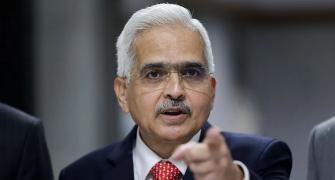Reinvent and innovate will be the key mantra for the Indian pharma industry in the New Year as the 'pharmacy of the world' looks to move from volume to value leadership, amid emerging challenges of inflation and pricing pressures in the global markets.

While R&D investment, market competitiveness, regulatory scrutiny, and domestic price regulations are expected to shape the growth of generics and injectable products, concerns such as price control and customs duties on medical equipment will continue to bother the healthcare industry in 2023.
The industry believes that in view of India's G20 Presidency, digital health innovation, achieving universal health coverage, improving healthcare infrastructure and delivery will continue to be the key driving factors in 2023.
The domestic pharmaceutical industry needs to keep upgrading its manufacturing capabilities while also harmonising regulatory requirements to match global standards as it marches ahead to touch the $130 billion-mark in value terms by 2030, according to industry players.
Indian Pharmaceutical Alliance (IPA) Secretary General Sudarshan Jain said that in 2022 despite geopolitical issues, India continued to supply medicines globally, living up to its reputation as the 'pharmacy of the world'.
"As the industry expands its footprint across the world, it will need to continuously invest in upgrading manufacturing standards to keep its promise of being a high-quality, reliable supplier of medicines to the world.
"The key to success, going forward, will depend on regulatory simplification, increased industry-academia collaboration, and strengthening innovation mindset," he told PTI.
This will set the stage for the sector to move from 'volume' to 'value' leadership in the coming years, Jain said.
IPA is an alliance of 24 leading domestic pharma companies, including Sun Pharma, Dr Reddy's Laboratories, Aurobindo Pharma, Cipla, Lupin and Glenmark.
The Organisation of Pharmaceutical Producers of India (OPPI) director general Vivek Sehgal said that India is poised for a very strong growth in the pharma sector, with another strong decade of yearly double-digit growth anticipated.
"Remaining cautious about the simmering issues from different fronts globally, we must prepare ourselves to address the challenges on R&D investments, and the rising need for Intellectual Property (IP) law and rights while harmonising our regulatory requirements to global standards," Sehgal stated.
OPPI represents research-based pharmaceutical companies in India like AstraZeneca, Johnson & Johnson and Merck, among others.
Citing the EY-FICCI report, Sehgal noted that the global market size of pharmaceutical products is estimated to cross the $1 trillion-mark in 2023, and India is estimated to touch $130 billion in value terms by the end of 2030.
Rating agency ICRA's assistant vice president & sector head corporate sector ratings Mythri Macherla said the domestic pharmaceutical companies are expected to report steady revenue growth of 6-8 per cent in FY2023 and in FY2024.
The revenue increase in FY23 will be supported by healthy growth in the domestic and emerging markets, while pricing pressures in the US and European markets will moderate the growth to a certain extent, she added.
The operating profit margin for ICRA's sample set is expected to contract marginally in FY23 as the industry continues to grapple with cost inflation and pricing pressures, Macherla said.
Indian companies, which mainly sell generic drugs in the US, have been facing pressure due to price erosion in the world's largest pharmaceuticals market.
Glenmark Pharmaceuticals chairman and managing director Glenn Saldanha said as the industry enters the post-pandemic phase, India is being seen as a reliable contributor to the global pharma industry through turnarounds that were able to be achieved in the fight against Covid.
"While we move ahead, the year 2023 presents itself with a rich opportunity for the Indian pharma sector to reinvent and innovate.
"Innovation needs to be made part of the larger ecosystem of developing novel drugs for unmet medical needs and making them accessible to the patients," he noted.
Gland Pharma MD & CEO Srinivas Sadu said increasing market competitiveness, regulatory scrutiny, and domestic price regulations will shape the growth of the generics and injectables market in India.
While noting that the pharma market in India has grown by 12.5 per cent in 2022, MSD India managing director Rehan A Khan stated that the company expects increased patient access and availability in both vaccines and oncology therapy areas in 2023.
Medical Technology Association of India chairman and director general Pavan Choudary said while the current year has given the industry several moments of satisfaction, relief and pride, there are still several concerns that the industry is facing.
"One area of concern is the high custom duties levied on medical devices and equipment.
"For products where the ability to import substitutes is still some time away, the high customs duty should be decreased," he said, adding that the 5 per cent health cess ad valorem should be removed.
"Another area where reassurance is needed is price control.
"Price control, when unavoidable, should follow the proven and predictable pathway of trade margin rationalisation as adopted during Covid for some medical devices," he said.
Choudary noted that the medical technology market is on the upswing with an increase in FDI, clocking $386 million in January-September of 2022 in comparison to only $152 million during the corresponding period last year.
As for the healthcare sector, industry body Nathealth President Shravan Subramanyam said that in view of India's G20 Presidency, digital health innovation, achieving universal health coverage, improving healthcare infrastructure and delivery will continue to be the key driving factors in 2023.
Fortis Healthcare MD and CEO Ashutosh Raghuvanshi said the key to success for 2023 will depend on the industry's capabilities to strengthen healthcare infrastructure, development of standalone cancer, cardiac and orthopaedic centres and greater collaboration with the government and academia to address the shortage of skilled workforce.









